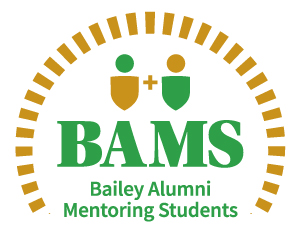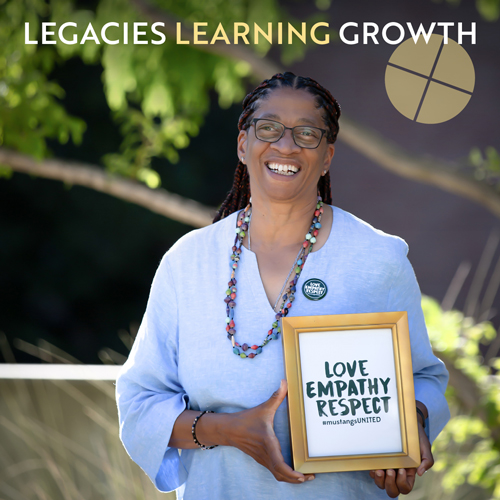Research Briefs 2025: Quick Looks at Research in the Bailey College of Science and Mathematics

BRIEF SUMMARIES SUBMITTED BY RESEARCH STUDENTS AND FACULTY IN THE BAILEY COLLEGE OF SCIENCE AND MATHEMATICS
FOR YEARS 2025 AND EARLIER
(Faculty mentors highlighted in bold italics.)
Lichens of Carrizo Plain
BIOLOGICAL SCIENCES

WHO: Emma R. Fryer, Michael Mulroy, Chloe Hodge (above left), Jujú E. Eulensen-Wallace (above right), Jason Dart, Nishanta Rajakaruna
WHAT: While Carrizo Plain is a hotspot for plant diversity, little effort has been made to sample the lichen flora of the Plain. The goal was to generate a preliminary list of lichen species to characterize the diversity of lichens on the basin floor of Carrizo Plain.
WHY: The group documents a substantial lichen flora and notes several collections that were the first record for a species in the region: five species were the first in San Luis Obispo County and nine were the first for the San Joaquin Desert.
WHAT’S NEXT: “Prior to our work, there were only two lichen records from the floor of Carrizo Plain. We identified 33 species from 122 specimen collections and plan to expand our research efforts in the area.” (Rajakaruna)
THE WOW: “We're excited to report that our research, carried out by two Frost summer undergraduates and supervised by two graduate students, was recently published in Evansia 41(2): 35-46.” (Rajakaruna)
Spinning, Syncing, Swarming
PHYSICS
WHO: Jack Barotta, Loic Ijzerman, John Sharpe, Nilgun Sungar
WHAT: The group has developed a new realization of active matter where millimetric chiral particles (spinners) on a vibrated fluid surface bind together, synchronize their individual rotation, and exhibit global rotation. Published Physical Review E 111, 035104, 2025. (See below figure.)
WHY: Active matter systems occur when relatively simple coupled components draw energy from the environment and spontaneously self-organize. Their work has revealed a physical realization that both syncs in time and organizes in space.
WHAT’S NEXT: Next steps include a fully fledged wave model to incorporate interference between adjacent particles and better understand the generation of capillary waves at the edge of spinners.
THE WOW: “We have discovered an entirely unanticipated global rotation of these coupled spinners. Understanding this effect will entail new understanding of wave-mediated fluid mechanical interactions.” (Sharpe)

Stimulation of Vagus Nerve
BIOLOGICAL SCIENCES

WHO: Michael Jones, Brian Larson, Magdalena Maj, Rodrigo Manjarin, Viktor Pikov, Tim Spade, Kim Sprayberry and Cal Poly students
WHAT: A collaborative team of surgeons, physiologists and animal scientists are conducting a biomedical translation science funded by the National Institutes of Health. The goal is to implant pacemakers to stimulate activity of abdominal trunk of the Vagus Nerve, which is innervating ascending colon.
WHY: Chronic constipation is characterized by colonic hypomotility due to decreased activity of the Vagus Nerve. Implanted pacemakers will increase colonic motility treating chronic constipation.
WHAT’S NEXT: The team is currently running an animal trial and performing neurobehavioral tests. They will next investigate changes in the colonic microbiome and perform histological analysis.
THE WOW: “Our interdisciplinary team with a wide array of techniques and expertise provides undergraduate students a unique opportunity for hands-on biomedical research.” (Maj)
Increasing Canopy Cover
BIOLOGICAL SCIENCES, Geography, Economics
WHO: Jackie Doremus, Andrew Fricker, Matt Ritter, Jonathan Ventura, Jenn Yost
WHAT: The Urban Forest Ecosystems Institute at Cal Poly (UFEI)will serve as the coordinating organization for the development of Cal Fire’s strategic plan aimed at increasing California's urban tree canopy cover by 10% by 2035, as mandated by CA Assembly Bill 2251.
WHY: California is becoming hotter and drier. Urban green space and the shade it affords mitigate temperatures and provide essential ecosystem services, buffering communities from the effects of climate change.
WHAT’S NEXT: The faculty/student team will solicit feedback from urban forestry stakeholders. The strategic plan will build off the urban forestry tools the team has created on the UFEI website.
THE WOW: Cal Fire and Cal Poly will work together with city governments, non-profits, tribal nations and tree professionals to create a plan to achieve a 10% canopy cover increase across the state.
Learning by Cloning
CHEMISTRY AND BIOCHEMISTRY
WHO: Samuel S. Catania, Christopher B. Cummings, Eirene M. Q. Ednacot, Austin J. Kinsella-Johnson, Rachel A. Johnson, Claire E. Meeds, Jack W. Reynolds, Ava E. Sanderson, Katharine R. Watts
WHAT: The group developed a course-based undergraduate research experience where students learn molecular cloning via Gibson Assembly in an upper division molecular biology lab. Students cloned novel plasmids for use in ongoing research projects in natural product biosynthesis at Cal Poly.
WHY: By developing a hands-on laboratory module in which students design and evaluate their experiment and contribute to authentic research projects, their understanding of the cloning process and downstream applications is enhanced.
WHAT'S NEXT: The team hopes the published materials will serve as an easily implementable science education tool to improve instructor assessments and student experiences in college-level molecular biology laboratories.
THE WOW: “We will continue to offer authentic research experiences in the classroom at Cal Poly, training students in molecular biology techniques that will prepare them for their careers. (Watts)
Phytoplankton Monitoring
BIOLOGICAL SCIENCES, Computer Engineering

WHO: (From left) Jack Anderson, Rob Brewster, Deeba Behbood Khosravi, Emma Lucke, Jorge Jose Ramirez, Daniel Gutierrez, Alexis Pasulka
WHAT: The research team is developing an Automated Sample Retrieval System (ASRS) to collect surface ocean water samples at programmed time intervals. These samples will be analyzed by an imaging flow cytometer at the Cal Poly Pier to enhance phytoplankton monitoring.
WHY: Phytoplankton are a key component of marine ecosystems, serving as the base of the food web and playing a vital role in carbon cycling. Traditional sampling methods are time-intensive and can miss relevant temporal variations.
WHAT’S NEXT: The team is testing and integrating the different elements of the ASRS and plans to deploy it in the field soon to evaluate its performance under real-world conditions.
THE WOW: By providing near-real-time data on phytoplankton communities at the Cal Poly Pier, the ASRS will enhance understanding of coastal ecosystems and aid in detecting and monitoring harmful algal blooms.
Sexual Health at Cal Poly
Kinesiology and Public Health

WHO: (From left in photo) Ava Marino, Leora Feinsmith,
Joni Roberts
WHAT: The group created a comprehensive sexual education Canvas course for Cal Poly students. Information on the course creation and curriculum has been published and presented at conferences. Analysis of the usage of the course will be presented at a conference this year.
WHY: “We want to fill gaps in sexual education knowledge to help improve the sexual health of college students, especially those here at Cal Poly.” (Feinsmith)
WHAT’S NEXT: The group will be analyzing Cal Poly specific data on the sexual health of students as well as student course utilization and engagement. This data will be used to make the course more useful to students.
THE WOW: “We have been funded by Baker and Koob Endowment. It is rewarding to see how the information we research and share impacts student choices for the better.” (Feinsmith)
Mesofauna on a Chromite Mine
BIOLOGICAL SCIENCES, Natural Resources Management and Environmental Sciences
WHO: Avery Humber, Yamina Pressler, Nishanta Rajakaruna
WHAT: San Luis Obispo is home to metal rich serpentine soils, including former chromite mines. The group's study aims to characterize the soil mesofauna (microarthropods) found in the rooting zone of buckbrush found on serpentine soils on and off a chromite mine at Irish Hills Natural Reserve.
WHY: While the diversity of plants and lichens of local serpentine soils have been the target of several recent studies, little is known about the soil mesofauna of biodiverse serpentine soils.
WHAT’S NEXT: The group's findings will shed light on how disturbance (i.e., mining) has shaped the diversity of soil mesofauna and better inform future restoration of chromite mines in the region.
THE WOW: “This June, Avery will present findings at the International Conference in Serpentine Ecology in Kyoto, Japan, and submit her paper for publication in the conference proceedings.” (Rajakaruna)
Tree Allometry
BIOLOGICAL SCIENCES, Natural Resources Management and Environmental Sciences
WHO: Andrew Fricker, Daniel Gonzales, Akshat Khandelwal,
Matt Ritter, Jenn Yost
WHAT: A Cal Poly research team is using tree care industry data to create accurate allometric equations for urban trees. Understanding how big different species of trees become, at what rate and in which proportion is incredibly valuable.
WHY: A reliable metric of this type can be used to make urban planning decisions; to calculate canopy gain and loss, and to understand what life expectancy and shade cover we can expect out of our urban trees.
WHAT’S NEXT: The massive data set from the tree care industry needs to be sorted by region, and by species, cleaned of errors and outliers, and plotted to understand overarching trends and averages.
THE WOW: “After analysis is complete, we will have a reliable metric for height, canopy width and growth rate for hundreds of tree species, calibrated by climatic region.” (May Reid-Marr, Urban Forest Institute Program Manager)
Submit your info to be included in Research Briefs.
See info on published research from the Bailey College of Science and Mathematics.





